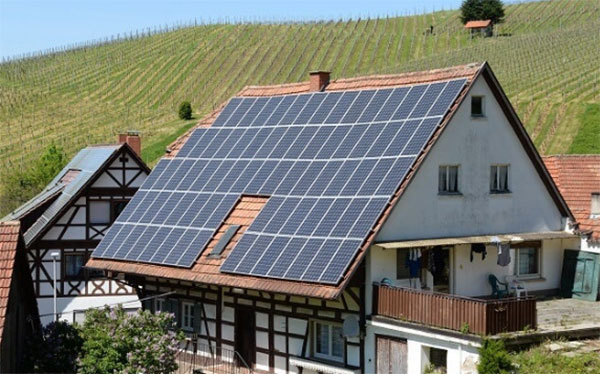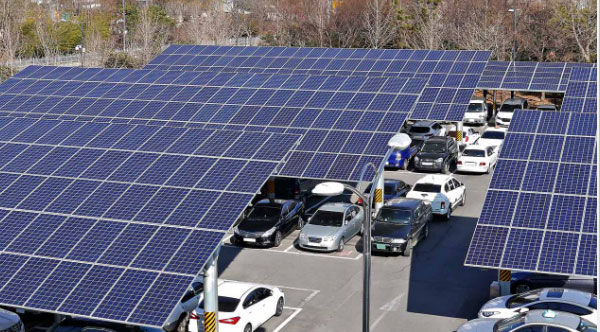Description
To determine if you need planning permission for ground mounted solar panels, consult local zoning laws and building regulations specific to your area.

Understanding Ground Mounted Solar Panels
Ground mounted solar panels offer a flexible and efficient way to generate electricity directly from the sun.
Types of Ground Mounted Solar Systems
Pole mounts elevate panels higher off the ground and sometimes include tracking systems that tilt the panels toward the sun throughout the day, enhancing efficiency.
Key Components and Installation Process
The key components of ground mounted solar panels include solar modules, mounting systems, inverters, and a connection to the power grid. The installation process starts with site selection, ensuring optimal sun exposure and minimal shading.? Inverters are crucial as they convert direct current (DC) produced by the panels into alternating current (AC) used in homes and businesses. The final step is connecting the system to the electrical grid.
Planning Permission for Ground Mounted Solar Panels
Obtaining planning permission is a critical step in the installation of ground mounted solar panels. This process ensures that the installation complies with local regulations and standards, which can vary significantly depending on the location.
General Criteria for Planning Permission
The general criteria for planning permission typically involve assessing the impact of the solar panel installation on the surrounding environment and community. Key factors include the size and scale of the installation, visual impact, environmental considerations, and the proximity to residential areas. For example, installations that cover an area less than 100 square meters often face fewer hurdles. The height of the panels is also a crucial factor, with most regulations permitting a maximum height of 2-3 meters to minimize visual impact.
Specific Considerations for Solar Panel Installations
When planning ground mounted solar panel installations, specific considerations must be taken into account:
- Site Location: The location should ideally have minimal visual impact on the surrounding area. Sites far from residential areas or hidden by natural landscape features are preferable.
- Grid Connection: The process of connecting the solar panels to the national grid involves specific technical requirements and safety standards.
- Solar Panel Efficiency: The efficiency of solar panels is a vital consideration. Panels with an efficiency rating of 15-20% are common, offering a balance between cost and performance.
- Durability and Maintenance: High-quality materials that can withstand environmental conditions are essential. The lifespan of solar panels can range from 25 to 30 years, requiring minimal maintenance.
- Cost Considerations: The total cost includes the price of the solar panels, which can vary from $0.70 to $1.50 per watt, installation costs, and any additional fees for planning permission or grid connection.

Navigating Local Zoning and Building Codes
When installing ground mounted solar panels, understanding and complying with local zoning and building codes is essential.
Zoning Restrictions and Requirements
Local zoning laws dictate how land can be used, affecting where solar panels can be installed. Key aspects of these restrictions typically include:
- Land Use Classifications: Certain areas may be designated exclusively for residential, commercial, or industrial use, each with different allowances for solar installations.
- Setback Requirements: These regulations determine how far solar panels must be from property lines, buildings, and streets.
- Height and Size Limits: There may be restrictions on how tall structures, including solar panels, can be, and how much of the property they can cover.
- Aesthetic Considerations: In some areas, panels must be installed in a manner that minimizes visual impact, such as being screened by vegetation.
Compliance with Building Codes for Solar Installations
Adhering to building codes ensures that solar panel installations are safe and structurally sound. Key aspects include:
- Structural Safety: Panels must be securely mounted to withstand weather conditions, such as high winds or heavy snow.
- Electrical Safety: Electrical installations must comply with national standards to ensure safety and proper grid connection.
- Fire Safety: Installations must not obstruct access to fire safety equipment or emergency exits.
Details and Specifics to Consider
- Panel Efficiency: The average efficiency of solar panels ranges from 15-20%, which influences the required size of the installation.
- Cost Factors: The cost of solar panels can vary from $0.70 to $1.50 per watt. Total installation costs also include regulatory compliance, which can add to the budget.
- Durability and Quality: Panels are expected to last 25-30 years. Choosing high-quality materials ensures longevity and reduces maintenance costs.
- Permitting Process: Obtaining the necessary permits can be a time-consuming process, requiring detailed documentation and sometimes fees.

Environmental Impact and Land Use
The installation of ground mounted solar panels, while promoting renewable energy, also necessitates careful consideration of environmental impact and land use.
Assessing Environmental Impact of Ground Mounted Solar Panels
The environmental impact of solar panel installations extends beyond their green energy production. Critical factors to assess include:
- Land Alteration: Clearing land for solar panels can disrupt local ecosystems. It's vital to minimize this impact by careful site selection.
- Biodiversity: Installations should avoid areas rich in biodiversity or migrate habitats if necessary.
- Water Usage: Solar panel maintenance may require water for cleaning. Using minimal water resources is crucial in arid regions.
- Carbon Footprint: The manufacturing and transportation of solar panels contribute to carbon emissions. Choosing manufacturers with sustainable practices can reduce this impact.
Land Use Considerations and Regulations
Key considerations include:
- Zoning Laws: Certain areas may be restricted for solar installations to protect agricultural land or natural reserves.
- Land Efficiency: Solar panels should use land efficiently. For instance, a system with 20% efficiency panels requires less space than one with 15% efficiency.
- Dual Land Use: Some projects allow for agricultural activities or wildlife habitats under solar panels, maximizing land use.
Detailed Considerations
- Panel Lifespan: Solar panels typically last 25-30 years, impacting long-term land use plans.
- Cost Implications: The cost per watt for solar panels ranges from $0.70 to $1.50, but land preparation and environmental compliance can add to the overall budget.
- Energy Output: The energy output of solar panels varies based on efficiency, size, and local sunlight conditions, affecting how much land is needed for desired power generation.

Financial and Tax Implications
The financial and tax implications of installing ground mounted solar panels are significant factors to consider. Understanding these implications helps in making an informed decision about the investment.
Potential Tax Benefits and Incentives
Investing in solar energy can lead to substantial tax benefits and incentives:
- Federal Tax Credits: In many regions, solar installations qualify for tax credits, which can reduce federal tax liability. For example, a tax credit might cover 30% of the installation cost.
- State and Local Incentives: Some states and localities offer additional incentives, like rebates or tax exemptions, to encourage solar energy adoption.
- Renewable Energy Certificates (RECs): Solar panel owners can earn RECs for the energy they produce, which can be sold to utility companies.
Understanding Cost Implications and Grants
The costs associated with solar panel installations are influenced by several factors:
- Installation Costs: These vary based on system size and type. For a residential setup, the cost can range from $15,000 to $30,000.
- Maintenance Costs: Generally low, maintenance might involve periodic cleaning and occasional part replacement.
- Efficiency and Size: Higher efficiency panels tend to be more expensive but require less space. Panel efficiency ranges from 15-20%.
- Grants and Subsidies: Government grants and subsidies can significantly reduce the upfront cost of installation.
- Energy Savings: Over time, solar panels significantly reduce electricity bills, offering long-term financial benefits.

Application Process for Planning Permission
Navigating the application process for planning permission for ground mounted solar panels is a critical step. Understanding and following the required steps ensures a smoother approval process.
Steps to Apply for Planning Permission
The application process typically involves several key steps:
- Preliminary Research:
- Understand local zoning laws and planning requirements.
- Determine if the area is environmentally sensitive or has other restrictions.
- Consultation with Local Authorities:
- Engage with local planning departments early to understand specific requirements.
- Seek pre-application advice if available.
- Preparing the Application:
- Develop detailed site plans and drawings.
- Include a comprehensive project description covering size, capacity (e.g., a 20 kW system), and expected energy output.
- Public Notification and Consultation:
- Notify neighbors and local communities as required.
- Address any public objections or concerns.
- Submission of Application:
- Submit the application with all necessary documentation and required fees.
- Awaiting Decision:
- The review process can take several weeks to months, depending on local policies.

Documentation and Approval Process
Key documents required for the application may include:
- Site Plans and Drawings: Detailed layouts showing the location, size, and orientation of the solar panels.
- Environmental Impact Assessment: If required, an analysis of the project's impact on local ecosystems.
- Technical Specifications: Details about the solar panels and installation, including efficiency rates, panel lifespan (typically 25-30 years), and system capacity.
- Ownership Documentation: Proof of land ownership or lease agreements.
- Community Engagement Reports: Summaries of public consultations and responses to community feedback.









